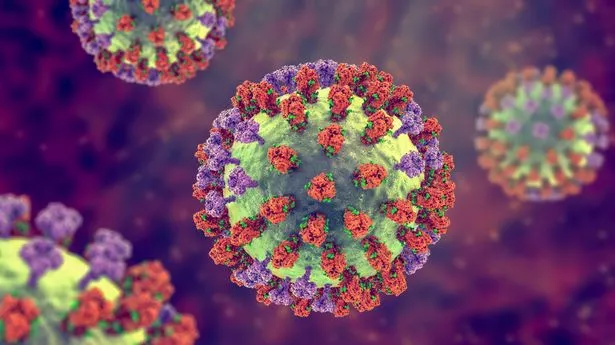The emergence of the H1N2 flu variant has sparked interest and concern among health officials as the CDC reported its first variant flu case for the 2024-25 season in Iowa. This variant H1N2v infection involved an adult who fell ill during the week ending January 18, leading to hospitalization, although the individual has since made a full recovery. According to the latest CDC flu update, there was no evidence of direct or indirect contact with swine, raising questions about the sources of variant flu cases in humans. Importantly, there is currently no indication of human-to-human transmission related to this incident, a factor that distinguishes variant influenza from more contagious strains. While variant flu cases are relatively rare, the CDC continues to monitor the situation closely as they can pose risks, especially for those with exposure to pig populations.
The recent report of a variant strain of influenza known as H1N2v has brought attention to the dynamics of flu infections that can occur outside the typical seasonal patterns. This novel variant highlights the complexities of flu epidemiology, particularly as health authorities track variant flu cases and their potential implications for public health. With a focus on this Iowa flu case, the CDC is investigating the circumstances surrounding the infection, noting the lack of human-to-human transmission. Such cases are often tied to interactions with animal populations, making it vital for health officials to remain vigilant. As the flu season progresses, understanding the nature of these infections will be crucial in preventing outbreaks and ensuring community health.
Understanding the H1N2 Flu Variant
The H1N2 flu variant, also known as H1N2v, is a subtype of the influenza virus that has been detected in various animal populations, particularly swine. In recent years, cases of H1N2v infections in humans have been reported, raising concerns about the potential for outbreaks. The recent confirmation of an H1N2v infection in Iowa marks the first variant flu case of the 2024-25 season, according to the CDC. This case underscores the importance of monitoring influenza variants and understanding how they can impact public health.
The CDC’s FluView update provides crucial insights into the trends of variant flu cases across the nation. In the past season, there were a total of nine reported variant flu cases, four of which involved the H1N2v strain. Surveillance of these cases is essential for identifying potential risks and ensuring that health officials can respond effectively. By keeping track of these infections, authorities can provide timely updates and recommendations to the public, especially those in close contact with swine.
CDC Flu Update: What You Need to Know
The latest CDC flu update highlights the emergence of the H1N2v infection, which serves as a reminder of the continued circulation of influenza viruses, including variants. The CDC regularly monitors flu activity and provides updates on the prevalence of various strains, helping healthcare providers and the public stay informed. In the case reported in Iowa, the patient experienced illness but has since recovered, indicating the effectiveness of timely medical intervention.
Iowa health officials conducted a thorough investigation into the recent H1N2v case, revealing that there was no direct or indirect contact with swine, which is a common source of variant flu infections. This finding is significant as it suggests that human-to-human transmission did not occur in this instance. The CDC emphasizes that while variant flu cases can happen, they do not spread easily among people, making public awareness and preventive measures crucial.
The Risk of Human-to-Human Transmission
One of the critical aspects of understanding variant flu cases is the risk of human-to-human transmission. While it is possible for variant strains like H1N2v to spread between individuals, such occurrences are rare. The recent Iowa case exemplifies this point, as the investigation revealed no evidence of transmission among the patient’s contacts. Health officials reassure the public that variant flu does not easily spread, which is a vital consideration for managing potential outbreaks.
Despite the low likelihood of human-to-human transmission, the CDC continues to monitor variant flu cases closely. Awareness campaigns are essential to educate the public about the importance of recognizing flu symptoms and seeking medical attention when necessary. By fostering a better understanding of how these viruses behave, health authorities can better prepare for any potential increase in variant flu cases, ensuring that communities remain informed and protected.
Variant Flu Cases and Public Health
Variant flu cases, such as the recent H1N2v infection, highlight the ongoing challenges public health officials face in managing influenza outbreaks. Each case provides valuable data that can inform future responses and preventive strategies. For instance, the nine variant flu cases reported last season, including those involving the H1N2v strain, underscore the need for continuous surveillance and research to understand the epidemiology of these infections.
Public health initiatives must focus on educating communities about the risks associated with variant flu and the importance of vaccination. Although variant strains typically arise from exposures to swine, public awareness can help reduce potential transmission routes. By promoting vaccination and encouraging individuals to be vigilant about flu symptoms, health officials can better manage variant flu cases and protect vulnerable populations.
Monitoring Influenza Variants: The Role of Health Officials
Health officials play a crucial role in monitoring influenza variants and responding to emerging cases like H1N2v. Their efforts involve tracking flu activity through laboratory testing and epidemiological investigations. The recent case in Iowa was thoroughly assessed, affirming the importance of a robust public health infrastructure capable of rapid response. This vigilance helps identify trends and informs public health recommendations.
In conjunction with the CDC, state health departments are tasked with collecting data on variant flu cases to analyze potential outbreaks. This data-driven approach ensures that health officials can allocate resources effectively and adapt strategies as necessary. Their ongoing assessments not only protect public health but also foster confidence in the systems designed to manage infectious diseases.
Preventing Variant Flu Infections: Recommendations
Preventing variant flu infections, including H1N2v, is a priority for public health officials. Key recommendations include receiving the annual flu vaccine, practicing good hygiene, and avoiding close contact with sick individuals. Since variant strains can arise from swine exposure, it is also crucial for those working with pigs to take necessary precautions to minimize their risk of infection.
Public health campaigns emphasize the importance of awareness and education regarding flu symptoms. Individuals should be encouraged to seek medical care if they experience flu-like symptoms, especially if they have been in contact with swine or have traveled to areas with reported variant flu cases. By fostering a proactive approach to flu prevention, communities can reduce the incidence of variant infections and safeguard public health.
The Future of Variant Influenza Surveillance
The future of variant influenza surveillance is essential in understanding and controlling the spread of viruses like H1N2v. As new variants emerge, health authorities must adapt their surveillance strategies to monitor trends effectively. Continuous research and collaboration between public health organizations and the scientific community will play a vital role in enhancing our ability to respond to variant flu cases.
Investing in advanced surveillance technologies and improving data sharing among health agencies can lead to more effective tracking of variant flu strains. By staying ahead of potential outbreaks, public health officials can implement timely interventions and inform the public about any necessary precautions. The goal is to create a resilient public health system that can swiftly respond to the challenges posed by variant influenza.
The Importance of Public Awareness in Flu Season
Public awareness plays a pivotal role during flu season, especially concerning variant strains like H1N2v. As cases are reported, it is vital for communities to stay informed about the risks and preventive measures. Awareness campaigns can educate the public about the significance of vaccination and recognizing symptoms early, thereby reducing the spread of influenza.
Moreover, informed individuals are more likely to take proactive steps, such as practicing good hygiene and seeking medical care when necessary. By fostering a culture of health literacy, public health officials can empower communities to protect themselves and reduce the impact of flu season, especially with the potential for variant cases.
Responding to Variant Flu Cases: A Collaborative Effort
Responding to variant flu cases like H1N2v requires a collaborative effort between health officials, healthcare providers, and the public. Quick identification and reporting of cases are essential in preventing further spread. The Iowa case is a prime example of how effective communication and prompt investigation can lead to a better understanding of variant flu dynamics.
Collaboration also extends to research initiatives aimed at understanding how these variants operate and their potential impact on public health. Through partnerships with academic institutions and public health organizations, officials can gather valuable data to inform decision-making and enhance preparedness for future flu seasons. This multifaceted approach is key to managing the challenges posed by variant influenza.
Frequently Asked Questions
What is the H1N2 flu variant (H1N2v infection)?
The H1N2 flu variant, or H1N2v infection, is a type of influenza virus that typically circulates among pigs but can occasionally infect humans. The CDC reported the first variant flu case of the 2024-25 season involving H1N2v in Iowa, highlighting its occasional presence in the human population.
What recent updates has the CDC provided regarding H1N2v infection?
According to the latest CDC flu update, an adult in Iowa was hospitalized due to an H1N2v infection but has since recovered. This case marks the first confirmed variant flu case of the current flu season.
How does human-to-human transmission occur with the H1N2 flu variant?
Human-to-human transmission of the H1N2 flu variant is rare. The recent case reported by Iowa health officials did not show any evidence of such transmission, indicating that while it is possible, the H1N2v virus does not spread easily among individuals.
Are there any health risks associated with variant flu cases like H1N2v?
While variant flu cases like H1N2v can pose health risks, they do not typically spread easily among people. The CDC notes that most cases are linked to exposure to pigs, and the recent H1N2v infection in Iowa did not involve any known contact with swine.
What should I know about the Iowa flu case involving H1N2v?
The Iowa flu case involving H1N2v was reported by the CDC as the first variant flu case of the 2024-25 season. The patient was hospitalized after falling ill, but has recovered. Investigations found no direct or indirect contact with swine, and no other illnesses were reported among the patient’s contacts.
How many variant flu cases were reported last season, and what strains were involved?
Last season, there were a total of nine variant flu cases reported in the United States, including four cases involving the H1N2v strain. Notably, three of those cases were among residents of Pennsylvania who had contact with pigs.
| Key Point | Details |
|---|---|
| First Case of H1N2 Variant in 2024-25 | The CDC reported the first H1N2 variant flu case in an adult from Iowa for the season. |
| Patient Illness and Recovery | The patient was hospitalized during the week ending January 18 and has since recovered. |
| No Contact with Swine | Iowa health officials found no direct or indirect contact with pigs or other illnesses among contacts. |
| No Human-to-Human Transmission | There is no evidence of human-to-human transmission linked to this case, as variant flu does not spread easily among people. |
| Historical Context | Last season saw nine variant flu cases, with four being H1N2v strain, predominantly associated with exposure to pigs. |
Summary
The H1N2 flu variant has emerged as a topic of concern following the CDC’s report of its first case in the 2024-25 season. This case, involving an adult in Iowa, highlights the importance of monitoring variant flu infections, especially given that they can occasionally arise without direct contact with swine. While human-to-human transmission of the H1N2 flu variant is rare, awareness and preventive measures remain crucial for public health.
The content provided on this blog (e.g., symptom descriptions, health tips, or general advice) is for informational purposes only and is not a substitute for professional medical advice, diagnosis, or treatment. Always seek the guidance of your physician or other qualified healthcare provider with any questions you may have regarding a medical condition. Never disregard professional medical advice or delay seeking it because of something you have read on this website. If you believe you may have a medical emergency, call your doctor or emergency services immediately. Reliance on any information provided by this blog is solely at your own risk.








